How To Use Raw Kratom Leaf?
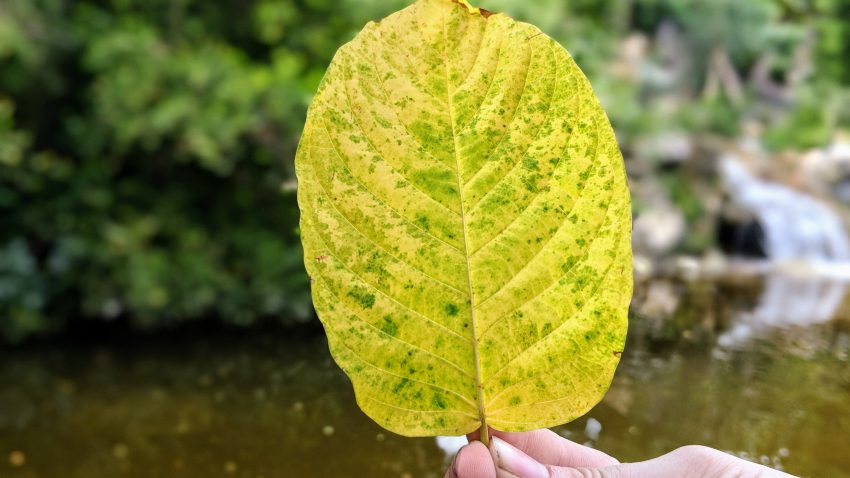
How To Use Raw Kratom Leaf?
Kratom is an evergreen tree indigenous to Southeast Asia. It is a strong tall tree that can grow over 100ft tall. There are many ways to consume it from grinding the whole plant into fine powder to just using the leaves. The most traditional way of consumption include chewing the leaves or brewing them into tea. Old farmers used to chew freshly taken off leaves of the plants to increase their productivity and take a dose of energy to get going throughout the day. The tea was prepared to get relaxing effects, get a good night’s sleep and relieve fatigue.
The most lovable aspect of consuming Kratom is that it offers you a lot of variety in its ways of consumption. The post discusses how you can take kratom leaves in innovatively different forms.
Chewing The Leaves
The simplest and easiest method of consuming kratom leaves is still chewing them. According to experienced consumers, it is one of the most effective ways of taking your dosage. However, a large part of the kratom community does not adopt this way because of the raw and bitter taste of the herb. When you chew the leaves, there is no way to avoid the taste. This method is also not recommended for beginners for the same reason. Due to this downside, this technique is largely reserved for experienced consumers who always like to go old-school and have no problem with the taste.
Grinding Your Leaves Into Coarse Powder To Take It With Water
You found kratom leaves at home, and you want to give it a try. What is the best method? Fortunately, if you are a new consumer with dried leaves, you can coarsely crush those leaves at home and take them by toss and wash method. In this way, you experience the taste much less than chewing. Take a small amount of crushed leaves (less than 4 grams for beginners), toss it over your tongue, and gulp a big sip of water or any fruit juice. In this way, the leaves will be washed off your tongue in no time, causing you to feel less taste.
Brew The Crushed Leaves Into Kratom Tea
One of the best ways to take powder or leaf Kratom is by making tea! You can simply turn kratom leaves into powder by putting them on your hand, placing a paper underneath, and crushing them, making sure the paper can collect the dust. Alternatively, you can use a pepper mill too. If you don’t want to get into crushing, you can directly prepare tea with leaves.
With the crushed leaves, simply take 1 teaspoon for 2-4 cups of tea. Add this amount to a container such as a kettle and add warm water over it. Make sure not to pour boiling water or let the water cool for 30 seconds if boiled before pouring.
Too hot water will ultimately destroy the alkaloids, killing off any goodness that you get with the tea. After adding the water, allow it to steep for at least 5 to 10 minutes and strain before drinking. You can also add honey, sugar, cinnamon, stevia, or lemon for better flavor. After you are done adding your favorite ingredients, the tea is ready to serve!
@BotanicalQueens Collab! – Explaining American Kratom Leaf

@BotanicalQueens Collab! – Explaining American Kratom Leaf
For this video we are partnering with @BotanicalQueens on Youtube ( https://www.youtube.com/c/BotanicalQueens/featured ). Thank you so much Emily from for allowing us to come on and talk about American Kratom. And highlight one of our 11 year old 40ft pink vein kratom trees. It is one of the tallest and oldest kratom trees in the United States. In this video, we go over what our American Kratom nursery looks for in picking fresh organic American Kratom Leaf. How to shape your kratom trees growing at home for a long term viability when picking. What some of the differences when it comes to kratom. We encourage you to sit back, relax, and understand the intricacy’s of mature kratom leaf. We hope that you learn something. Solicitation notice: Please do not ask where to buy in the comments. These comments will be deleted and could harm the channel.
What Is Kratom Stem and Vein? – Kratomleaf.us
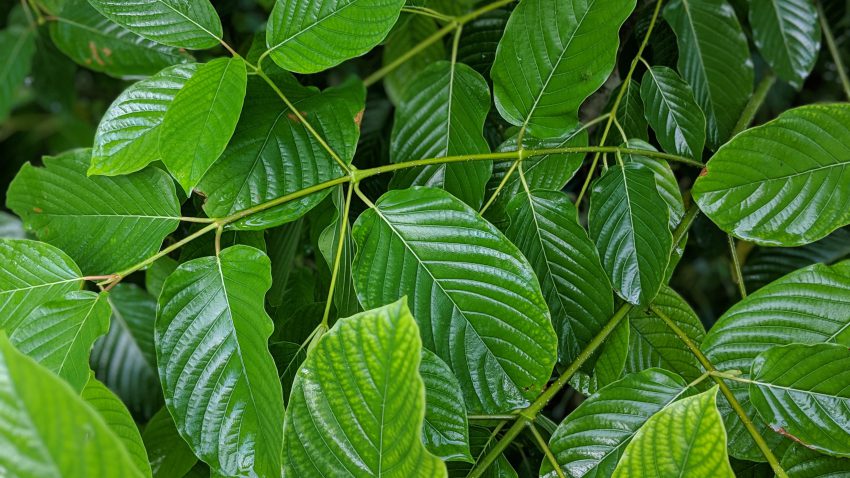
What Is Kratom Stem and Vein?
What Is Kratom Stem and Vein? – As you know the stems and veins are part of the kratom leaf. They are typically removed during the harvesting process. However, there is wellness support within these parts of the leaves. This would be kratom that is composed of the main stem and vein material. Since it is very hard to rid the fatty tissue from the stem and veins you will notice that your mixture will contain some other parts as well. So, when kratom farmers are disassembling the leaves they will separate the stem and vein material to be sold separately. The leaves are harvested, left to dry, and then farmers will carefully destem and devein the leaves before they are crushed into a powder. The raw parts of the kratom leaves, also known as kratom vein and stem, will be packaged and sold as-is.
They contain a wealth of alkaloids that live within the kratom plant. Since these parts of the kratom plant do have value, farmers have started packaging them and selling them as a byproduct of kratom. However, it is important to note that there is a lack of scientific studies when it comes to the kratom industry. The value of the stem and veins has never really been researched and only anecdotal advice is available on these products. When conducting your own research, you will find that some kratom users say this byproduct contains weaker amounts of the alkaloids that live within the leaf. Others say they contain higher amounts. However, there is no concrete evidence to support either claim. Regardless of research, there is some value within the kratom stem and veins. They contain very unique characteristics that some kratom users are seeking.
Why Would You Want To Use Stem and Vein Kratom?
Most kratom users will opt for kratom powders and capsules. Stem and vein kratom is a product that stands out on its own. This type of kratom has a variety of uses that appeal to some kratom users. One notable use of stem and vein kratom is to combine it with powder. This provides the user with a very diverse product packed with a large range of alkaloids. It will also provide a very aromatic essence.
One thing that really appeals to kratom users is the pricing of stem and vein kratom. This form of kratom will be priced even cheaper than powder. This means that potentially they could purchase stem and vein kratom and grind it up themselves. This type of kratom does appeal to those who are looking for a budget-friendly solution.
Kratom Leaf vs. Stem and Vein
The powder is very different from stem and vein products. For those who are seeking kratom for a robust alkaloid profile, you will probably want to stick to kratom powder. While stem and vein kratom does contain some alkaloids, it will never provide the same type of support that kratom powder does. However, there are instances when a customer may prefer to use stem and vein kratom over powder. Here are just a few examples where this may be the case.
KRATOM MYTHS
KRATOM MYTHS
There are many misconceptions surrounding mitragyna speciosa. This mostly seems to be due to assumptions or deceiving vendors trying to keep sales high. These myths were then taken by others and spread like wild fire! Some so ingrained in the kratom community even good intentioned sellers have to use made up b.s. like powder having a vein color just so customers will know what they are talking about! Well…lets get started 🙂
MYTH 1. KRATOM IS HARD TO GROW
You may have heard that kratom needs to be drenched in humid air, that its soil needs to stay swampy wet, and will die if it gets a wee bit cold….. Nope, not true! kratom is a very tough and forgiving plant that’s able to grow in a wide range of environments! Kratom can tolerate the low humidity of desert climates, can be watered as infrequently as most common garden plants, and while it will go dormant and defoliate in the cold and needs protecting from frost, it will start growing again once its warms back up…just like a lot of other trees. Oh, and kratom seeds stay viable waaay longer than a week, but the fresher the better 🙂 for more info check out **GROWING KRATOM**
MYTH 2. KRATOM PLANTS TAKE YEARS BEFORE THEY CAN BE HARVESTED
Even from seed kratom is worthwhile harvesting in its first year! Just be sure to harvest leaves at least 30 days old (preferably 3-4 months old) and preferably from a plant that is 9+ months old. clones are already mature and leaves can be harvested as soon as they are ripe.
MYTH 3. KRATOM POWDER VERIETIES ARE BASED ON THE VEIN COLOR OF LEAVES THAT ARE USED
The vein color of a kratom plant can very from white to dark red and even purple…but its just a color and has nothing to do with the plants alkaloid makeup. A vast majority of kratom plants have some degree of red in their veins. In fact it is very rare to find one that doesn’t! When you see kratom powder for sale it more than likely will have a “vein color” attached to the name. This is a bit misleading and shouldn’t be know as vein colors as vendors are not separating the leaves by color. And even if they did….its wouldn’t hold any significants.
The best way to explain what is going on is by using tea varieties as an example. You see, all the different true teas come from one plant, Camellia sinensis. Depending on how you harvest and process the tea you end up with different kinds. For example white tea comes from very young leaves treated in a deliquiate fashion while black is from matured leaves that are roughed up a bit/processed to oxidize it. Kratom powder is similar. Green and white “vein” is made with leaves that are dried carefully away from heat and light to best preserve the alkaloids so that it more so resembles the fresh plant. Red “vein” is the result of leaves being dried in the sun and or in bags to ferment. This degrades the alkaloids a bit and gives the leaves its characteristic rusty color. “Bones”(what the farmers call the leaf veins) can also be mixed into the powder to further alter its qualities.
MYTH 4. MALAY POWDER IS MY FAVROITE SO A MALAY PLANT WILL BE THE SAME
(OR BORNEO..OR HORNED, ECT)
There are two reasons this is not going to work.
1.vendors usually just make up names and these names can be based on something like the way it feels, a blend/recipe that particular vendor makes, or….nothing at all! Most all kratom comes from Borneo, is sent to vendors who brand it as they see fit, and then ship it out. Its marketing. And like previously stated in the last myth it doesn’t really matter.
2. Even if the kratom plant comes from a specific location, as of now, there are no qualifying physical or chemical markers that would signify a kratom plant to be from one specific location. Different kratom phenotypes(the way it looks) and chemotypes(chemical makeup) can be found growing among each other in many different areas. It appears that their all grow intertwined. You wouldn’t be able to see a random kratom plant and say that it is a Malaysian plant because it has such and such or whatever. As of now and until we find a more reliable way to label these plants the names provided by sellers such as Borneo or Malay are for differentiation/name sake only and at best just let you know where the specimens hail from. One vendors Indonesian can be totally different from another’s.
Sometimes the names can be a quality marker though. Maeng da or horned should mean its that vendors higher quality powder. Or bali will usually be run of the mill average. But at the end of the day its up to the vendor what they want to call it.
MYTH 5. HORNED PLANTS ARE STRONGER
Sorry, but most plants are capable of growing horns. Some kratom plants are more likely to horn out than others, but this doesn’t determine the plants potency. For example the hornist plant that we carry…. ;)….. although awesome… isn’t our strongest.
Leaves having horns seems to be dependent on growing conditions. Mid summer is when I get the most personally. And not all the leaves are horned. I’ve yet to see a plant that only grows horned leaves(although I’ve heard clams).
So when you get horned powder it may be coming from plants that have a tendency to make more horned leaves, but it doesn’t matter. Horned leaves may be a sign that the plant is producing more alkaloids(which has yet to be seen), but its ability to make horned leaves doesn’t mean the plant genetics itself are any better.
HARVESTING KRATOM: THE INS-AND-OUTS OF THE WORLD’S BEST KRATOM LEAF
HARVESTING KRATOM: THE INS-AND-OUTS OF THE WORLD’S BEST KRATOM LEAF
Do I need rooting hormone?
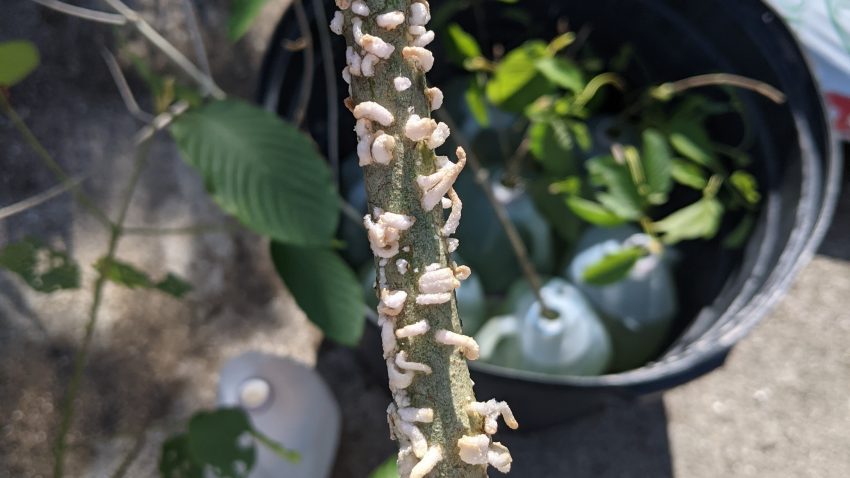
Do I need rooting hormone?
You do not need rooting hormone for cuttings to root. We ship out every cutting with rooting hormone already applied. However if you are going to add rooting hormone we do recommend that you are sparing while applying. If you add to much hormone and cover the cutting it will make it hard for cuttings to produce roots thru the hormone.
How often should I water unrooted Kratom Cuttings?
How often should I water unrooted kratom cuttings?
Customers should leave the plastic bag these cuttings come in sealed at all times they should not be releasing moisture. There should be no need to water these cuttings. In the event the soil medium begins to firm up it is advised to mist or pour a table spoon or two of water. The soil medium should always be moist to the touch at all times. Even one night of a dried up soil medium will kill a plant seeing as they are so young. You can also mist the cuttings with a water bottle.
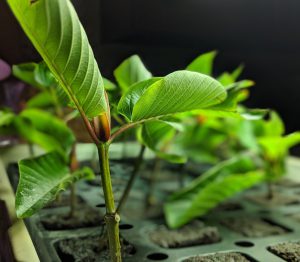
Where does the money from your order go to?

Where does the money from your order go to?
We are a small self funded American Kratom nursery. Our team does not take payment for our work. Everything we make goes back into the nursery, Documenting kratom, Our kratom social media platform Kratom Watchdog, Our kratom avatar chat Kynto, and our other kratom advocacy projects.’
Where is Thai Kratom Harvested From?
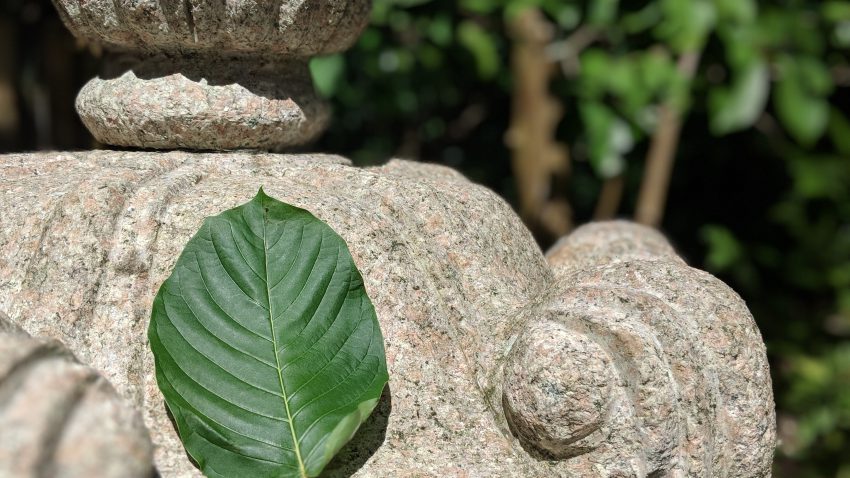
Where is our Thai Kratom Harvested From?
Made from Thailand’s most mature Kratom leaves, Red Thai Kratom is one of our most popular strains. As its name suggests, the Thai kratom strain is imported directly from Thailand, although it is often grown in other areas across Southeast Asia. Our Red Thai kratom powder is:
- Ethically sourced using fair trade policies
- Independently verified for quality and potency
- Additive, chemical, and filler-free
ECO-FARMING AND KRATOM
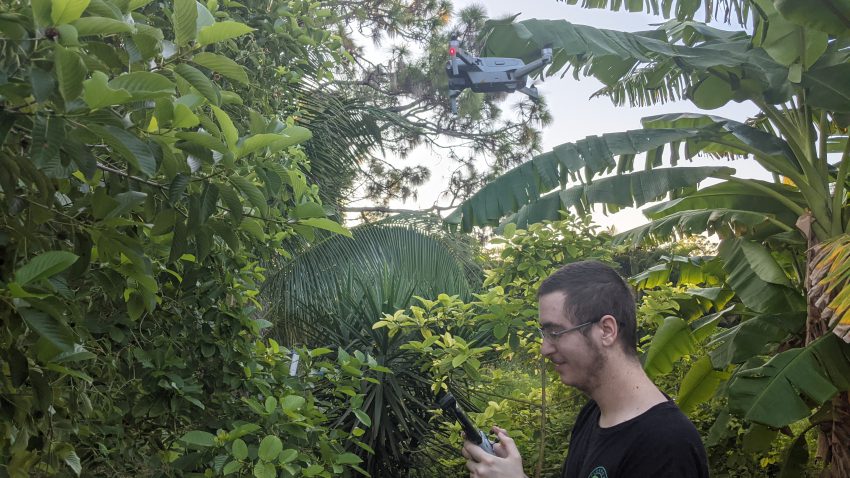
ECO-FARMING AND KRATOM
ECO-FARMING AND KRATOM – Kratom trees, known scientifically as Mitragyna speciosa, are tropical evergreen trees in the coffee family. They grow naturally in rainforests throughout Southeast Asia. The leaves of the kratom tree have both traditional and modern significance for homeopathic medicine.
Kratom was first introduced to Western society in the 1990s but only took hold as an ethnobotanical supplement in the last decade. One potential draw for kratom’s recent rise in popularity? Sustainable, ecological farming practices, otherwise known as eco-farming.
Sustainable farming practices are vital for the continued health of our global ecosystems, including international food economies. Because of this, kratom and eco-farming practices could set the international gold standard for responsible agriculture.
And if this feels like a lot of environmental mumbo-jumbo, don’t worry! Eco-farming can be broken effectively down into seven principles, and they’re quite simple:
The Seven Basic Principles of Eco-Farming
- Crop Sovereignty: people, not corporations, should control crops like food and herbal medicines; producers and consumers should determine how our crops are produced.
- Reward Rural Livelihood: eco-farming creates healthy rural development; this, in turn, creates crop security and fights poverty.
- Smarter Agriculture: sustainable farming practices can create higher yields over time.
- Biodiversity: opting for diverse crops instead of monoculture crops like corn or soy can protect nature; biodiversity allows people to use seasonal plants at cheaper costs.
- Sustainable Soil: ecological farming creates healthier soil; eco-farmers often refrain from chemical inputs like insecticides, which can contaminate the environment.
- Pest Protection: eco-farming creates pest-resistant soil, allowing farmers to control pests and weeds without chemical inputs.
- Food Resilience: diverse and resilient crops, not monoculture crops, offer more protection from natural resource-related market changes; this creates stable crop economies, both locally and transnationally.
Think of this as your guide to eco-farming. If an agricultural practice meets these guidelines, consider it beneficial to eco-farming. Now, let’s see how kratom farming stands up to these seven principles!
Do Kratom and Eco-Farming Go Hand-in-Hand?
Eco-farming sounds great in theory: farmers and consumers hold more power over the food chain, and farming practices that could potentially contaminate the environment are abandoned in favor of ecological farming techniques. Greenpeace even calls eco-farming the combination of “modern science and innovation with respect for nature and biodiversity.”
However, critics say that eco-farming has to mesh well with reality. If ecological farming practices don’t make sense economically, they should be modified in favor of a more profitable system.
But remember when we said kratom could set the gold standard for eco-farming practices? This plant is a shining example of how to incorporate eco-farming into the modern agricultural fold. In fact, kratom meets all seven principles of eco-farming– not in theory, in reality. Here’s how:
(1) Kratom Allows for Crop Sovereignty
Kratom Spot sources their kratom from small family farms throughout Southeast Asia. In regions like Indonesia, kratom trees grow wildly in the rainforests and jungles. These tropical reserves offer rich, nutrient-dense soil without the need for chemical inputs like soil supplements or herbicides.
Here, kratom farmers and consumers control the supply, not corporations. The people have farmed kratom trees for generations. With that experience, they’ve learned how to use eco-farming practices in a sustainable, farmer-controlled setting.
(2) Kratom Rewards Rural Livelihood
The natural kratom trees in Southeast Asia bring employment opportunities, ecological advancements, and global trade opportunities to rural farmers in Southeast Asia. Not only do kratom consumers overwhelmingly support eco-farming practices, mass-farming techniques might yield lower-quality kratom. As such, kratom farmers can maintain their traditional farming practices in an era of technological agricultural advancement.
(3) Kratom is Smarter Agriculture
This is where kratom sets a decisive eco-farming example. Kratom is farmed using a variety of sustainable techniques, such as decentralized cultivation and selective pruning.
Decentralized cultivation means this: kratom farming does NOT rely on clear-cutting forests for farmland. Instead, kratom farmers use both wild growth and small, family farms to supply kratom leaf harvests. This allows native regions to maintain local biodiversity while still profiting from a major agricultural trade product. Biodiversity is vital to Southeast Asia, a region that accounts for an estimated 20 percent of all biodiversity on the planet!
Selective pruning, much like decentralized cultivation, allows for sustainable farming techniques that do not degrade local environments. It works like this: knowledgeable kratom farmers harvest only the leaves needed for the harvest. They do not harvest entire kratom trees at once. Selective pruning has many benefits:
- Only the mature leaves of the desired vein color are harvested.
- The kratom tree is left healthy and unharmed, continuing to grow new leaves.
- The kratom tree is left with the ability to feed new growth and existing growth, creating higher yields over time.
(4) Kratom Promotes Biodiversity
We’ve already mentioned that kratom aids in the maintenance of biodiversity in Southeast Asia. But what else defines the relationship between kratom farming and biodiversity?
For starters, because kratom trees are often grown using decentralized cultivation, wildlife habitats are maintained. Decentralized agriculture, an eco-farming practice, allows us to preserve the diverse habitats of the rainforests. Taken from a past Kratom Spot article:
Animals are part of a delicate natural balance that has already been disrupted in some areas by human encroachment.
But preserving biodiversity goes beyond animal habitation. Biodiversity can shield waterways from nitrogen pollution, improve air quality, and even support human health in various ways.
(5) Kratom Contributes to Sustainable Soil
The rainforests of Southeast Asia do not need chemical fertilizers, insecticides, herbicides, or any chemical inputs that risk damaging soil health. Yes, we know that some chemical fertilizers are “safe” when used properly in industrial settings. However, they must also be removed from consumer-grade products before sale. This isn’t always the case. Furthermore, these toxic chemicals can leach into groundwater and create rippling environmental effects.
But when you practice eco-farming, you don’t even need to worry about chemical inputs– they’re not there! Instead, the soil naturally cycles nutrients from the local flora and fauna.
(6) Kratom Contributes to Natural Pest Protection
As we learned above, kratom trees contribute to healthy soil and biodiversity. In turn, this creates natural pest control! You can thank eco-farming for that: avoiding chemical inputs can protect local insect populations. For example, chemical insecticides risk killing both good and harmful insects.
Good insects eat pests and support biodiversity. Furthermore, because kratom grows in tropical rainforests’ rich, nutrient-dense soil, they are extremely resilient to pest pressure. If we focused on soil health in the United States instead of sheer profitability, our crops could potentially evolve the same.
(7) Kratom Offers Crop Resilience
Kratom farmers use selective pruning, so kratom trees stay intact year-round. This offers the final guideline for eco-farming: crop resilience! Kratom is extremely resilient as it can be harvested year-round under the correct conditions. When trees are left whole, and only necessary leaves are harvested, kratom farmers know that they’ll always have a kratom harvest to look forward to.
Non-eco-farming practices, such as growing monoculture crops like corn in nutrient-lacking soil, can ruin the soil and make farming impossible for generations. On the hard, kratom’s sustainable farming methods will leave kratom trees growing for generations in the same soil we see today.
How Does Kratom Set an Eco-Farming Example
Kratom farmers are well aware of the benefits of eco-farming– they experience them. However, we can, too. We can incorporate eco-farming practices into the United States agriculture sector and enjoy increased biodiversity, increased agricultural profitability, reduce the effects of climate change, and increase our own food supply, reducing poverty.
The benefits of eco-farming go on and on. Sure, it may not be the right move for all agricultural sectors. However, elements of eco-farming – like leaving chemical inputs in the past so they don’t contaminate the environment – should be adopted in favor of more natural choices.
Kratom does not grow naturally in the U.S. But that shouldn’t stop us from using kratom farming as an example for the rest of the world’s agricultural practices. Kratom shows that eco-farming is possible. It’s ecologically possible, economically possible, and possible today! You can do your part to make eco-farming a part of our industries.
Kratom Watchdog Android & IOS

Kratom Watchdog Android & IOS
Have you heard of the Kratom Watchdog app? Kratom Watchdog is a kratom social network built from the ground up by one of the founding member of the non-profit American Kratom Association (AKA). A booming social community with a focus on kratom advocacy. Kratom Watchdog is the oldest kratom social media platform online. With over 400 videos and over 200,000 photo’s from our own kratom Nursery. And 7,000 members we have a very strong growers community that are always willing to help. Kratom Watchdog is available on Android, IOS, and at kratomwatchdog.com. We are a small self funded development studio. If you would like to donate to the development of the platform we would appreciate it. Thank you for your continued support.
![]()
![]()

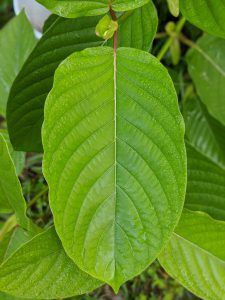
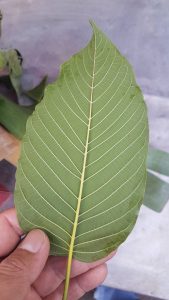

Recent Comments